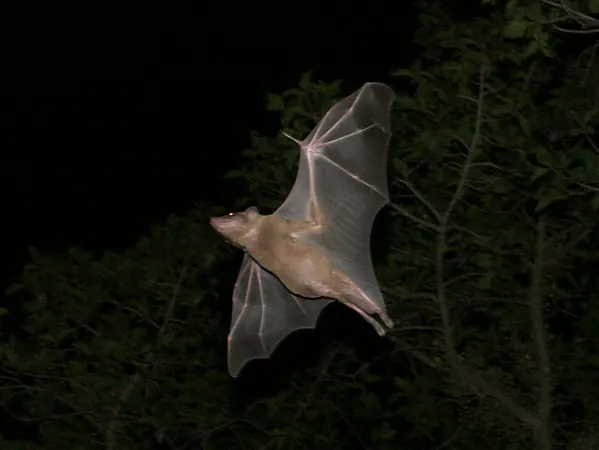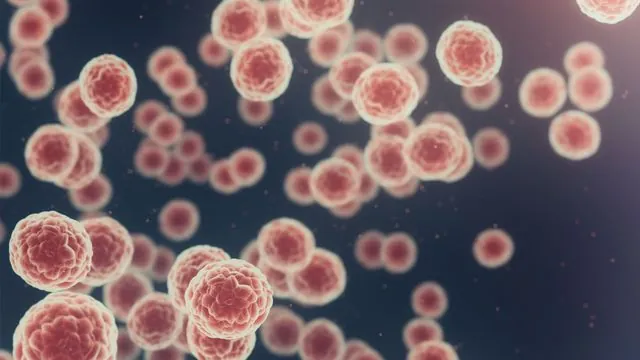
Unlocking Bat Memories: How Neural Replay Could Transform Our Understanding of Memory
2025-07-09
Author: Ming
The Mystery of Memory Formation
Every moment lives on in our minds, from serene beach strolls to critical work presentations. Yet, the intricate process of how our brains transform fleeting experiences into lasting memories has long puzzled scientists. Recent insights suggest that a mechanism called neural replay plays a key role, allowing neurons to reenact past activation sequences both during and after an experience.
Bats Take Center Stage in Groundbreaking Study
A groundbreaking study by neuroscientists at the University of California, Berkeley, has taken this exploration to new heights—quite literally—by examining the neural activity of freely flying bats. Published in *Nature*, this pioneering research is the first to simultaneously record the activities of numerous neurons as bats navigate their environment, revealing unexpected patterns of neural replay and theta sequences crucial for memory and planning.
Revolutionizing Our Understanding of Neural Activity
For two decades, the focus had been predominantly on individual neuron activity in bats to unravel the complexities of animal behavior. However, as study lead Michael Yartsev explains, true understanding comes when observing ensembles of neurons. "Emerging properties only manifest when studying groups of neurons together," he states.
Implications for Human Memory and Neurological Disorders
By understanding how replay and theta sequences operate in animal brains, researchers may unlock the secrets of human memory formation, potentially paving the way for innovative treatments for neurological conditions like Parkinson's or Alzheimer's.
Cutting-Edge Techniques in Neural Recording
Studying neural replay effectively has been a complex endeavor, requiring researchers to monitor hundreds of neurons at once. Yartsev's team has pioneered wireless recording technologies to achieve this feat. Using advanced silicon electrode arrays, they can capture rich data from up to hundreds of neurons in real-time as bats soar through their habitats.
Decoding Place Cells: The Brain’s GPS
At the heart of this study is the exploration of 'place cells,' specialized neurons in the hippocampus that create an internal map of an animal's environment. By monitoring these cells, researchers can ascertain the trajectory a bat follows during its flight, revealing a clear connection between neural activity and physical location.
Replays: The Brain's Memory Trick
Interestingly, the bats exhibited replay events during rest that mimicked their earlier flight patterns but in a time-compressed format. Unlike previous studies done in artificial conditions with rodents, the bats showcased natural active and resting states during the same sessions. Crucially, these replay sequences occurred minutes after an experience and often in locations far removed from where the original flight took place.
Time Compression: The Key to Memory Processing
One of the most startling discoveries was that the duration of replay events was consistently short, irrespective of how long the bat's flight was. This points to a fundamental method of information processing in the brain where memories are packed into 'fixed packets,' enhancing the efficiency of memory storage and retrieval.
Theta Sequences: A New Frontier in Neuroscience
Turning attention to theta sequences, which are believed to support replay, the researchers found that bats exhibit rapid neural activity during flight, parallel to theta sequences in rodents, but intriguing differences emerged. Unlike rodents—who utilize specific frequency patterns—bats synchronize their fast sequences to the rhythm of their wingbeats. This unique discovery raises questions about a potential universal mechanism in neural processing across various species.
Conclusion and Future Directions
As the research progresses, the fascinating connections between bat behavior and their neurological underpinnings promise to deepen our grasp of memory systems. This groundbreaking study could not only transform our understanding of how memories are formed but also lead to vital advancements in addressing memory-related disorders in humans.





 Brasil (PT)
Brasil (PT)
 Canada (EN)
Canada (EN)
 Chile (ES)
Chile (ES)
 Česko (CS)
Česko (CS)
 대한민국 (KO)
대한민국 (KO)
 España (ES)
España (ES)
 France (FR)
France (FR)
 Hong Kong (EN)
Hong Kong (EN)
 Italia (IT)
Italia (IT)
 日本 (JA)
日本 (JA)
 Magyarország (HU)
Magyarország (HU)
 Norge (NO)
Norge (NO)
 Polska (PL)
Polska (PL)
 Schweiz (DE)
Schweiz (DE)
 Singapore (EN)
Singapore (EN)
 Sverige (SV)
Sverige (SV)
 Suomi (FI)
Suomi (FI)
 Türkiye (TR)
Türkiye (TR)
 الإمارات العربية المتحدة (AR)
الإمارات العربية المتحدة (AR)